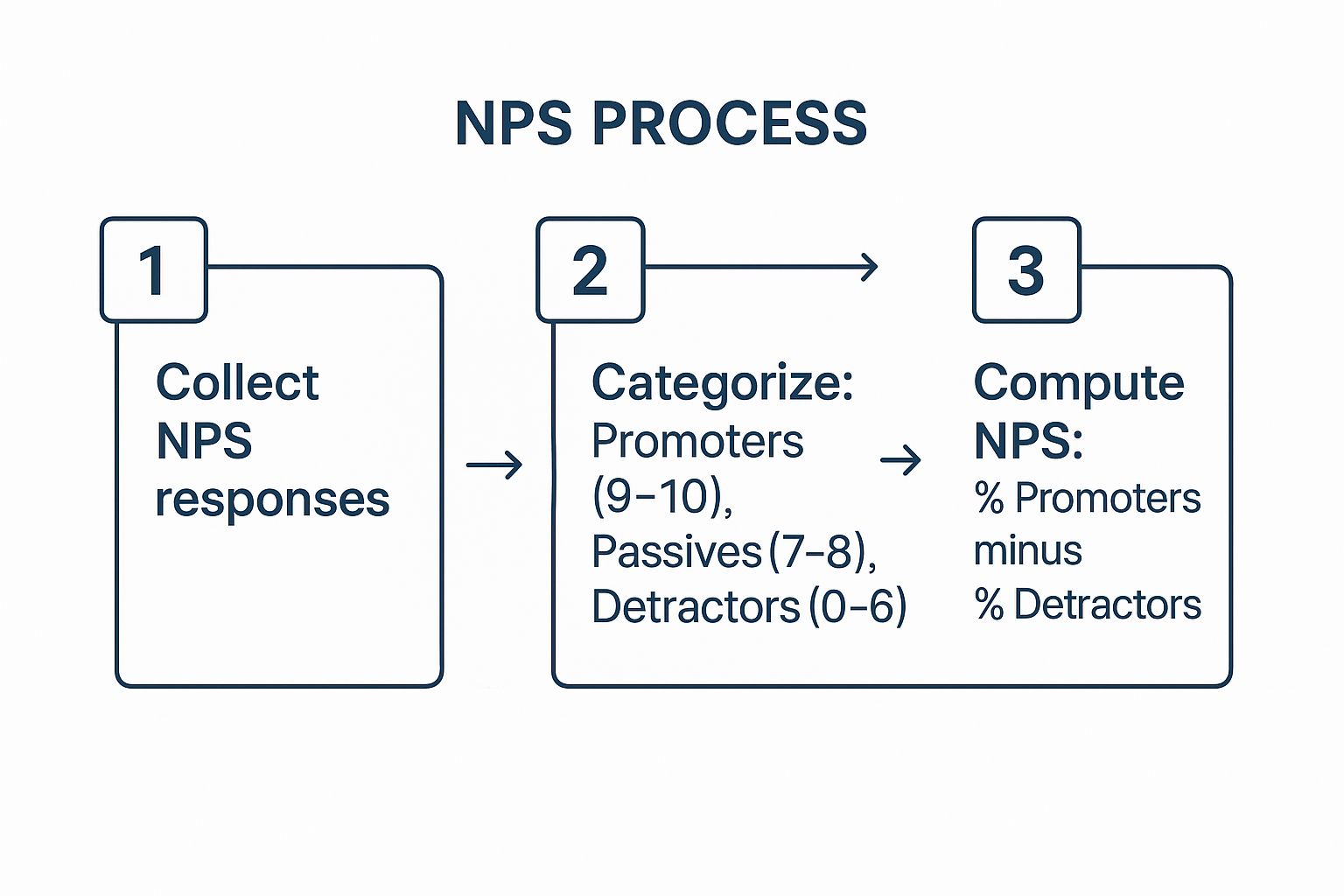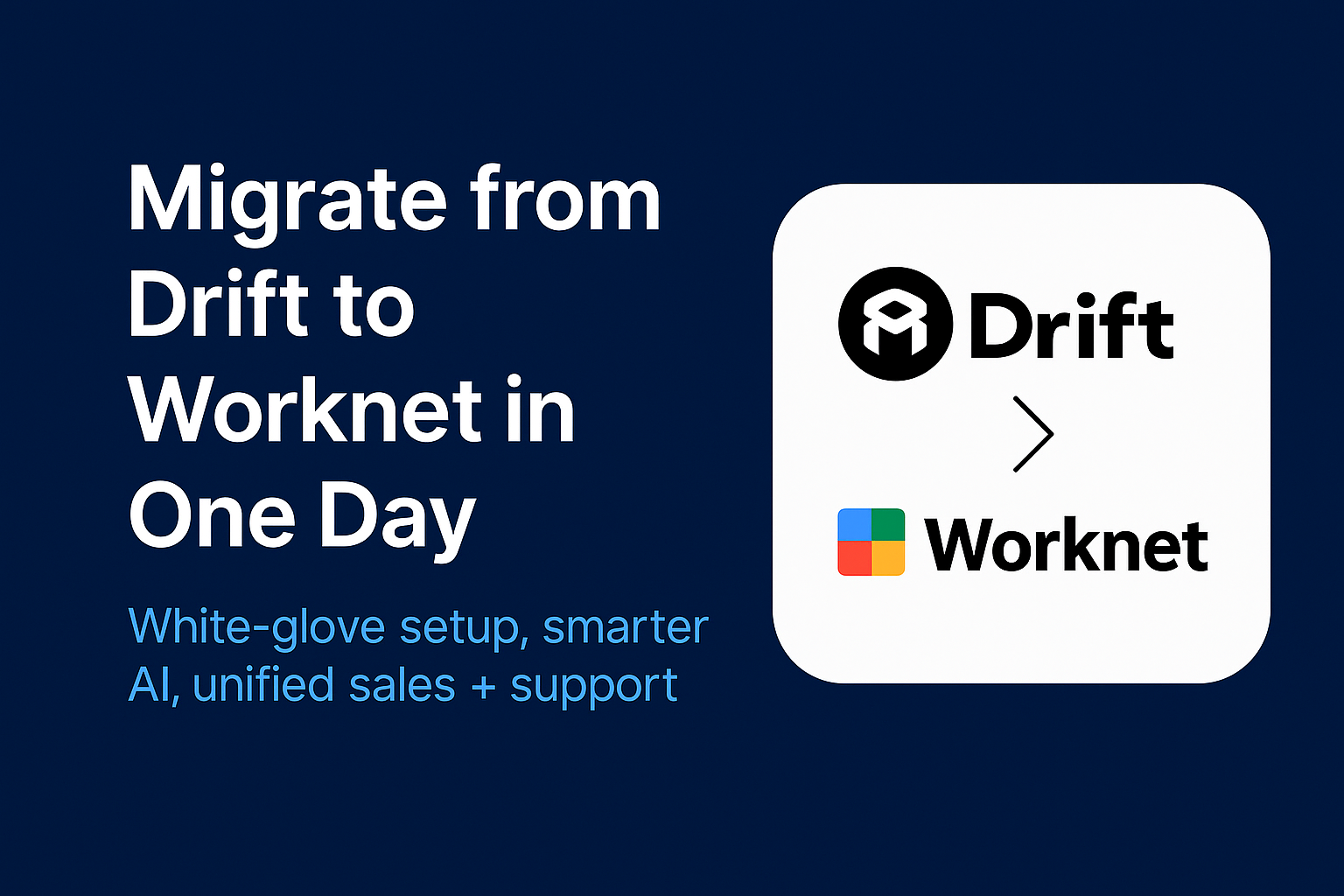7 Powerful Voice of Customer Examples to Steal in 2025
In the race to build better products, your most valuable insights aren't hiding in a boardroom. They're already being shared by your customers through support tickets, survey responses, and social media posts. The challenge isn't a lack of feedback; it's knowing how to capture, analyze, and act on it effectively. This is where mastering the Voice of Customer (VoC) becomes a critical advantage.
This guide moves beyond theory to provide a deep dive into 7 actionable voice of customer examples. We will dissect real-world applications from NPS surveys to customer support transcripts, showing you exactly how leading companies turn raw feedback into strategic gold.
You won't just see the examples; you will learn the replicable tactics behind them. We will break down how to:
- Analyze feedback to uncover hidden opportunities.
- Translate insights into specific product improvements.
- Implement VoC programs that directly impact retention and growth.
By the end of this article, you will have a clear playbook for turning everyday customer conversations into a powerful engine for building a product that wins the market. Let's get started.
1. Net Promoter Score (NPS) Surveys
Net Promoter Score (NPS) is one of the most widely used metrics for capturing the voice of the customer. It measures customer loyalty and satisfaction with a single, direct question: “On a scale of 0 to 10, how likely are you to recommend our company/product/service to a friend or colleague?” This simplicity is its greatest strength, making it an accessible and powerful tool.
Based on their responses, customers are segmented into three categories:
- Promoters (9–10): Your most loyal and enthusiastic customers.
- Passives (7–8): Satisfied but unenthusiastic customers who are vulnerable to competitive offerings.
- Detractors (0–6): Unhappy customers who can damage your brand through negative word-of-mouth.
The final NPS score is calculated by subtracting the percentage of Detractors from the percentage of Promoters. Companies like Apple and Airbnb use NPS not just as a score but as a system to drive organizational improvements and foster a customer-centric culture.
How to Calculate and Use NPS
The real value of NPS comes from the follow-up. The quantitative score tells you what customers feel, but the open-ended follow-up question, “What is the primary reason for your score?”, reveals why. This qualitative feedback is a goldmine of actionable insights.
The following infographic illustrates the straightforward process of calculating your NPS.

This process flow clearly shows how raw survey responses are transformed into a single, benchmarkable metric, providing a clear pulse on customer loyalty.
Actionable Strategy: Closing the Loop
One of the most critical applications of NPS is "closing the loop." This involves following up with respondents, especially Detractors, to address their concerns directly.
Strategic Takeaway: Responding to Detractors can turn a negative experience into a positive one, potentially preventing churn and demonstrating that you value customer feedback. Similarly, engaging with Promoters can help you identify your key strengths and gather powerful testimonials.
For more in-depth strategies and a variety of real-world survey templates, you can explore these NPS survey examples. Tracking NPS trends over time, segmented by customer demographics or touchpoints, provides one of the clearest voice of customer examples available, directly linking customer sentiment to business outcomes.
2. Customer Journey Mapping with Voice of Customer Integration
Customer Journey Mapping involves creating a visual representation of the entire experience a customer has with your company. By integrating the voice of the customer directly into this map, you transform a simple process diagram into a powerful empathy-building tool. This method combines observational data with direct customer feedback, emotions, and pain points at every touchpoint.

Unlike isolated metrics, a journey map provides a holistic narrative, showing how different interactions connect and influence overall perception. Companies like Starbucks use it to trace the customer path from app interaction to in-store pickup, while the Mayo Clinic maps patient journeys to enhance healthcare delivery. This approach reveals critical moments of truth where the customer experience is made or broken.
How to Build and Use a VoC-Integrated Journey Map
The core of this method is gathering authentic customer feedback and layering it onto the map. You start by outlining the key stages and touchpoints of the customer lifecycle. Then, for each stage, you incorporate VoC data from various sources like survey responses, support tickets, interview quotes, and social media comments.
This process helps you pinpoint specific areas of friction and delight. You can see not just what a customer did (e.g., contacted support) but also how they felt about it (e.g., frustrated) and why (e.g., long wait times). This detailed view is one of the most comprehensive voice of customer examples for driving strategic change.
Actionable Strategy: Focusing on Emotional Highs and Lows
The most impactful insights from a journey map often come from analyzing the emotional journey of the customer. Identify the points where customer sentiment drops significantly and prioritize these as areas for immediate improvement.
Strategic Takeaway: Treat the emotional lows in the journey map as critical incidents. Addressing the root cause of these pain points not only solves a specific problem but can fundamentally improve customer satisfaction and loyalty across the entire experience.
For a deeper dive into the methodology, a great resource is the Nielsen Norman Group's guide on Journey Mapping. Creating persona-specific maps and regularly updating them with fresh VoC data ensures your organization stays aligned with evolving customer needs and expectations.
3. Online Review and Rating Analysis
Public reviews and star ratings are a massive, unsolicited source of the voice of the customer. Analyzing this feedback from platforms like Google, Yelp, Amazon, or industry-specific sites provides a raw, unfiltered look at customer perceptions of your products, services, and overall brand experience. This method involves systematically gathering and dissecting this public data to pinpoint strengths, weaknesses, and emerging trends.
Unlike solicited feedback from surveys, online reviews reflect what customers are motivated to share on their own terms. Companies can leverage this data for a competitive advantage:
- E-commerce & Retail: Amazon constantly analyzes product reviews to identify counterfeit goods, adjust its recommendation algorithms, and provide performance feedback to third-party sellers.
- Hospitality: Marriott International monitors reviews across TripAdvisor, Booking.com, and Google to identify service gaps at specific properties, enabling targeted training and operational improvements.
- SaaS: Software review sites like G2 and Capterra offer a goldmine of detailed feedback, which B2B companies use to inform their product roadmaps and competitive positioning.
How to Collect and Analyze Review Data
The real power of review analysis lies in aggregating data to see beyond individual comments and identify patterns. This requires moving from anecdotal reading to a systematic process. The goal is to translate unstructured text from thousands of reviews into quantifiable insights about specific features, service elements, or customer journey stages.
The process involves collecting reviews, using text analytics and sentiment analysis to categorize feedback, and then manually digging into key themes. This uncovers not just what customers like or dislike, but the specific language they use to describe their experiences, which is invaluable for marketing and product development.
Actionable Strategy: Monitor Themes and Competitors
A key strategy is to track recurring themes over time and benchmark them against your competitors. Are customers consistently praising your easy onboarding but complaining about a specific feature? Are your competitors getting rave reviews for their customer support? This analysis provides direct, actionable intelligence.
Strategic Takeaway: Publicly responding to reviews, both positive and negative, is a crucial part of this process. It demonstrates transparency and a commitment to listening, which can improve your brand's reputation. Monitoring competitor reviews provides a free, powerful source of market intelligence to identify opportunities you may be missing.
By treating online platforms as a continuous focus group, you can tap into one of the most honest and impactful voice of customer examples. This approach moves beyond simple reputation management and turns public feedback into a strategic asset for growth.
4. Social Media Listening and Sentiment Analysis
Social media listening is the practice of monitoring online platforms, forums, and communities to track mentions, conversations, and sentiment about a brand. This proactive approach captures the unfiltered voice of the customer, providing raw, unprompted feedback in real-time. It moves beyond simple metrics like likes and shares to understand the context and feeling behind online conversations.
By tapping into this vast stream of public opinion, companies can identify emerging trends, address customer service issues before they escalate, and gain competitive intelligence. Brands like Wendy's leverage social listening for witty customer engagement, while Netflix monitors sentiment to gauge audience reactions to new content and inform future productions.

How to Implement and Use Social Listening
Effective social listening relies on powerful tools that can track keywords, hashtags, and brand mentions across various platforms. The process begins by defining what you want to track, including your brand name, products, campaign hashtags, and even competitor names. The tools then collect this data and use natural language processing (NLP) to assign a sentiment score (positive, negative, or neutral) to each mention.
This combination of quantitative data (mention volume, reach) and qualitative data (the actual content and sentiment of the post) provides a comprehensive view of your brand’s public perception. This is one of the most dynamic voice of customer examples because it reflects what customers say to each other, not just what they say directly to the company.
Actionable Strategy: Proactive Engagement and Trend Spotting
The true power of social listening is its ability to enable proactive action. Don't just collect data; use it to engage with your audience, solve problems, and spot opportunities. For example, Delta Airlines uses social listening for proactive customer service, often identifying and resolving travel issues shared on Twitter before the customer formally complains.
Strategic Takeaway: Monitor conversations to identify both pain points and moments of delight. Engaging with negative comments shows you care and can resolve issues publicly, while amplifying positive mentions creates powerful user-generated content and strengthens brand loyalty.
By consistently analyzing these public conversations, you can gain deep customer experience insights that inform everything from marketing messaging to product development. This real-time feedback loop is essential for staying relevant and responsive in today's fast-paced market.
5. Customer Interview and Focus Group Programs
While surveys provide quantitative scale, customer interviews and focus groups offer unparalleled qualitative depth. These structured conversations are designed to uncover the "why" behind customer behaviors, gathering rich, contextual insights about their experiences, needs, and pain points that other methods often miss. This makes them a cornerstone for any robust voice of customer program.
These programs involve direct, real-time dialogue with individuals or small groups. Companies leverage them to explore complex topics that cannot be easily captured in a multiple-choice format.
- Customer Interviews: One-on-one conversations that allow for deep dives into an individual's journey, motivations, and frustrations.
- Focus Groups: Moderated discussions with a small group of customers (typically 6-10) to explore a specific topic, generating a dynamic exchange of ideas and perspectives.
Pioneers in human-centered design like IDEO rely heavily on customer interviews to inform their innovative products. Similarly, Procter & Gamble famously uses in-home interviews to observe how consumers interact with their products in a natural environment, revealing crucial usage details.
How to Conduct and Use Interviews
The power of this method lies in active listening and adaptability. A skilled moderator prepares a discussion guide but remains flexible, allowing the conversation to follow valuable, unexpected paths. The goal is to create a comfortable, neutral environment where customers feel safe sharing honest feedback.
For a comprehensive approach to gathering this type of qualitative Voice of Customer data, explore a strategic guide for deep insights with over 150+ open-ended questions examples. Recording sessions (with permission) is critical for later analysis, allowing teams to meticulously review nuances in tone and language.
Actionable Strategy: Thematic Analysis for Product Roadmaps
The true value of interviews is realized when you transform raw conversation into actionable themes. This process, known as thematic analysis, involves coding transcripts to identify recurring patterns, pain points, and desires.
Strategic Takeaway: Grouping interview feedback into themes (e.g., "onboarding confusion," "desire for better reporting," "mobile app limitations") directly informs and prioritizes your product roadmap. This ensures development efforts are laser-focused on solving real, validated customer problems, making it one of the most direct voice of customer examples for driving strategy.
By including a diverse mix of customer segments in your interviews, you can compare themes across different user groups, uncovering hidden market opportunities and ensuring your product serves a wider audience effectively.
6. Post-Purchase and Transactional Surveys
Post-purchase and transactional surveys capture customer opinions immediately following a specific interaction, such as a purchase, a support ticket resolution, or a service visit. This method is powerful because it gathers feedback while the experience is still fresh in the customer's mind, providing highly contextual and accurate insights.
These surveys are typically short and focused on the specific transaction. They help companies pinpoint strengths and weaknesses at critical touchpoints in the customer journey. Based on the interaction, feedback can measure:
- Product Satisfaction: How happy is the customer with the item they just received?
- Service Quality: Was the support call helpful and efficient?
- Ease of Purchase: Did the checkout process meet expectations?
Companies like Uber, which prompts for a ride rating immediately after a trip, and Amazon, which emails for product reviews after delivery, have mastered this approach. Their systems provide a continuous stream of timely feedback, making this one of the most direct voice of customer examples for evaluating specific operational components.
How to Implement and Use Transactional Surveys
The strength of this method lies in its timing and relevance. A survey about the delivery experience is most effective when sent shortly after the package arrives, not weeks later. The key is to connect the feedback request directly to the event that triggered it.
For instance, Apple often sends a brief customer satisfaction survey after a user interacts with its support team. This allows them to measure the effectiveness of individual support agents and identify trends in customer issues, linking specific feedback to operational performance.
Actionable Strategy: Isolate and Improve Touchpoints
Use transactional feedback to diagnose and enhance individual stages of the customer journey. By isolating feedback for each touchpoint (e.g., checkout, delivery, support), you can allocate resources more effectively to fix specific problems.
Strategic Takeaway: Do not aggregate all transactional feedback into one bucket. Segment responses by interaction type, customer segment, or even by the specific employee involved. This granular analysis uncovers hidden friction points and highlights top-performing areas that can be replicated across the organization.
By focusing on these micro-experiences, you can make targeted improvements that collectively create a much stronger overall customer experience. For a deeper look at different survey types that can be adapted for transactional feedback, review these customer satisfaction survey templates.
7. Customer Support Interaction Analysis
Systematically analyzing customer support interactions is a powerful method for capturing the authentic voice of the customer. This process involves reviewing conversations from channels like phone calls, live chats, emails, and support tickets to uncover recurring issues, sentiment patterns, and opportunities for improvement. It transforms a cost center into a strategic intelligence hub.
Companies renowned for their customer-centricity use this approach to drive meaningful change:
- Zappos analyzes customer service calls not just to solve individual problems but to identify underlying product flaws or confusing policies that need revision.
- Microsoft uses support ticket data to prioritize software bug fixes and inform the development of highly requested features, directly linking support trends to its product roadmap.
- Bank of America reviews call center interactions to streamline complex banking processes, aiming to reduce customer effort and improve overall satisfaction.
How to Collect and Use Interaction Data
The value of this method lies in aggregating and structuring unstructured data. By applying consistent tagging, sentiment analysis, and categorization to every interaction, you can move from anecdotal evidence to quantifiable trends. When analyzing support emails, for instance, effective data extraction is key. Following email parsing best practices can ensure that you capture crucial information accurately and efficiently.
This systematic approach allows teams to pinpoint exactly where customers are struggling, what features they love, and which processes are causing friction, providing one of the most direct voice of customer examples available.
Actionable Strategy: Share Insights Across Departments
The most critical part of support interaction analysis is ensuring the insights don't remain siloed within the customer service team. This data is a goldmine for product, marketing, and operations teams.
Strategic Takeaway: Create a formal process for sharing summarized findings and key interaction snippets with other departments. A product team, for example, can use direct quotes from frustrated users to prioritize bug fixes or validate demand for a new feature, creating a direct line from customer pain to product improvement.
By implementing a robust system for managing and learning from these conversations, you can turn everyday support tickets into a continuous feedback loop. For more information, you can explore this detailed guide to customer interaction management.
7 Voice of Customer Methods Comparison
Putting Voice of the Customer into Action: Your Next Steps
Throughout this guide, we've explored a wide spectrum of powerful voice of customer examples. From the quantitative clarity of Net Promoter Score (NPS) surveys to the rich, qualitative details found in customer interview transcripts and support tickets, a clear pattern emerges. Leading companies don't treat customer feedback as a passive data collection exercise; they build dynamic, operational systems to listen, analyze, and act on what their customers are telling them every single day.
The ultimate goal is to move beyond isolated feedback points and create a continuous, integrated feedback loop. This is where raw customer insights directly fuel strategic decisions across your entire organization, shaping your product roadmap, refining your marketing messages, and elevating your customer success strategies. The examples we’ve analyzed, from social media sentiment to post-purchase surveys, all demonstrate that the most profound insights come from a multi-channel approach.
Your Roadmap to a Powerful VoC Program
Getting started doesn't require boiling the ocean. The key is to begin with focused, achievable steps that align with your most pressing business objectives.
- Prioritize Based on Goals: If reducing churn is your top priority, start by analyzing customer support interactions and exit survey feedback. If you're focused on product-led growth, in-app feedback and trial user interviews offer the fastest path to actionable insights.
- Select Your Tools: Choose one or two methods from this article to master first. Whether it's implementing a structured customer interview program or deploying a targeted transactional survey, focus on executing it flawlessly before expanding.
- Establish a System for Action: The most critical step is creating a clear process for what happens after you collect the feedback. Who analyzes it? Where are insights stored and shared? How are they translated into tasks for the product, marketing, and support teams?
- Amplify Customer Voices: After gathering and acting on insights, consider leveraging direct customer voices to build social proof and demonstrate your company’s commitment to listening. Showcasing real testimonials and feedback responses closes the loop and builds immense trust with your audience.
The True Value of Listening
Mastering the art and science of VoC is not just about improving customer satisfaction scores. It’s a direct lever for sustainable growth, innovation, and competitive advantage. The voice of customer examples detailed in this article are more than just success stories; they are blueprints for building a business that is resilient, adaptive, and deeply aligned with the market it serves. By embedding the customer's perspective into your company's core DNA, you transition from making assumptions to making data-driven decisions guided by your most valuable asset: your customers. Start today, and let their voices chart your course to lasting success.
Ready to turn customer conversations into your biggest growth engine? Worknet.ai Inc analyzes all your unstructured customer feedback from sources like support tickets, chats, and calls to uncover actionable insights. Discover how Worknet.ai Inc can help you automate your VoC analysis and build a truly customer-centric product.
FAQs
.png)
Lorem ipsum dolor sit amet, consectetur adipiscing elit. Suspendisse varius enim in eros elementum tristique. Duis cursus, mi quis viverra ornare, eros dolor interdum nulla, ut commodo diam libero vitae erat. Aenean faucibus nibh et justo cursus id rutrum lorem imperdiet. Nunc ut sem vitae risus tristique posuere.
Lorem ipsum dolor sit amet, consectetur adipiscing elit. Suspendisse varius enim in eros elementum tristique. Duis cursus, mi quis viverra ornare, eros dolor interdum nulla, ut commodo diam libero vitae erat. Aenean faucibus nibh et justo cursus id rutrum lorem imperdiet. Nunc ut sem vitae risus tristique posuere.
Lorem ipsum dolor sit amet, consectetur adipiscing elit. Suspendisse varius enim in eros elementum tristique. Duis cursus, mi quis viverra ornare, eros dolor interdum nulla, ut commodo diam libero vitae erat. Aenean faucibus nibh et justo cursus id rutrum lorem imperdiet. Nunc ut sem vitae risus tristique posuere.
Lorem ipsum dolor sit amet, consectetur adipiscing elit. Suspendisse varius enim in eros elementum tristique. Duis cursus, mi quis viverra ornare, eros dolor interdum nulla, ut commodo diam libero vitae erat. Aenean faucibus nibh et justo cursus id rutrum lorem imperdiet. Nunc ut sem vitae risus tristique posuere.
Lorem ipsum dolor sit amet, consectetur adipiscing elit. Suspendisse varius enim in eros elementum tristique. Duis cursus, mi quis viverra ornare, eros dolor interdum nulla, ut commodo diam libero vitae erat. Aenean faucibus nibh et justo cursus id rutrum lorem imperdiet. Nunc ut sem vitae risus tristique posuere.
Lorem ipsum dolor sit amet, consectetur adipiscing elit. Suspendisse varius enim in eros elementum tristique. Duis cursus, mi quis viverra ornare, eros dolor interdum nulla, ut commodo diam libero vitae erat. Aenean faucibus nibh et justo cursus id rutrum lorem imperdiet. Nunc ut sem vitae risus tristique posuere.
Lorem ipsum dolor sit amet, consectetur adipiscing elit. Suspendisse varius enim in eros elementum tristique. Duis cursus, mi quis viverra ornare, eros dolor interdum nulla, ut commodo diam libero vitae erat. Aenean faucibus nibh et justo cursus id rutrum lorem imperdiet. Nunc ut sem vitae risus tristique posuere.
Lorem ipsum dolor sit amet, consectetur adipiscing elit. Suspendisse varius enim in eros elementum tristique. Duis cursus, mi quis viverra ornare, eros dolor interdum nulla, ut commodo diam libero vitae erat. Aenean faucibus nibh et justo cursus id rutrum lorem imperdiet. Nunc ut sem vitae risus tristique posuere.
Lorem ipsum dolor sit amet, consectetur adipiscing elit. Suspendisse varius enim in eros elementum tristique. Duis cursus, mi quis viverra ornare, eros dolor interdum nulla, ut commodo diam libero vitae erat. Aenean faucibus nibh et justo cursus id rutrum lorem imperdiet. Nunc ut sem vitae risus tristique posuere.
Lorem ipsum dolor sit amet, consectetur adipiscing elit. Suspendisse varius enim in eros elementum tristique. Duis cursus, mi quis viverra ornare, eros dolor interdum nulla, ut commodo diam libero vitae erat. Aenean faucibus nibh et justo cursus id rutrum lorem imperdiet. Nunc ut sem vitae risus tristique posuere.


.svg)


.webp)
.webp)
.webp)




